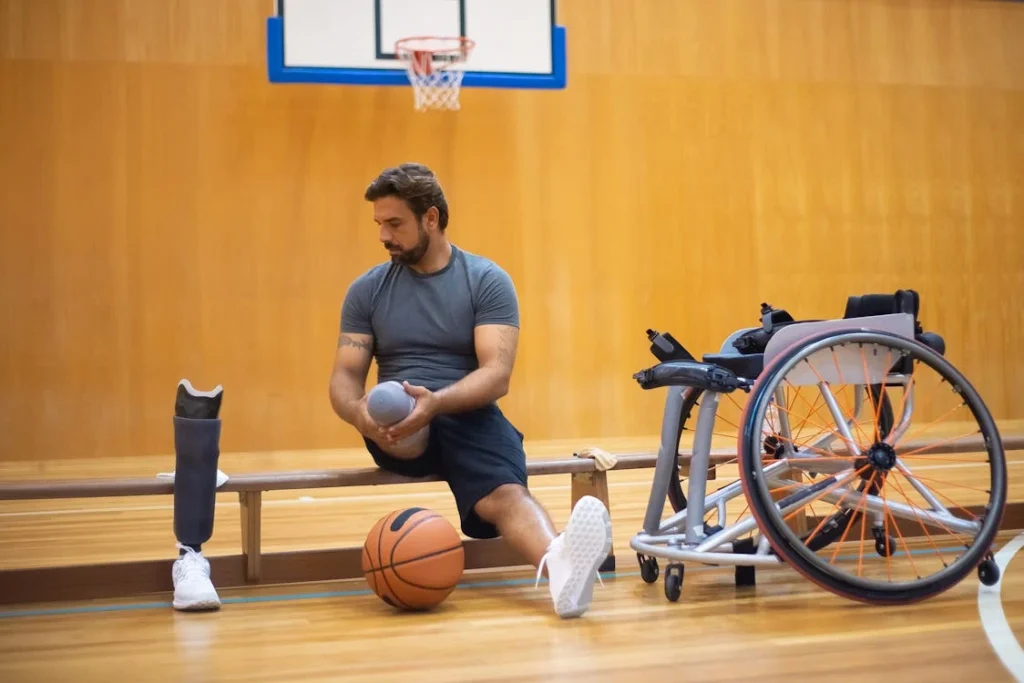Losing a limb changes your life in many ways. Whether it’s your first day after surgery or a few weeks into recovery, you’re likely asking: What now? One of the first steps toward getting back on your feet—sometimes quite literally—is caring for your residual limb.
Proper care starts before you even get your prosthetic. It starts with how you treat the limb that’s healing. This is where massage and compression come in. These two techniques help reduce swelling, manage pain, shape your limb for a prosthetic, and even help you feel more in control.
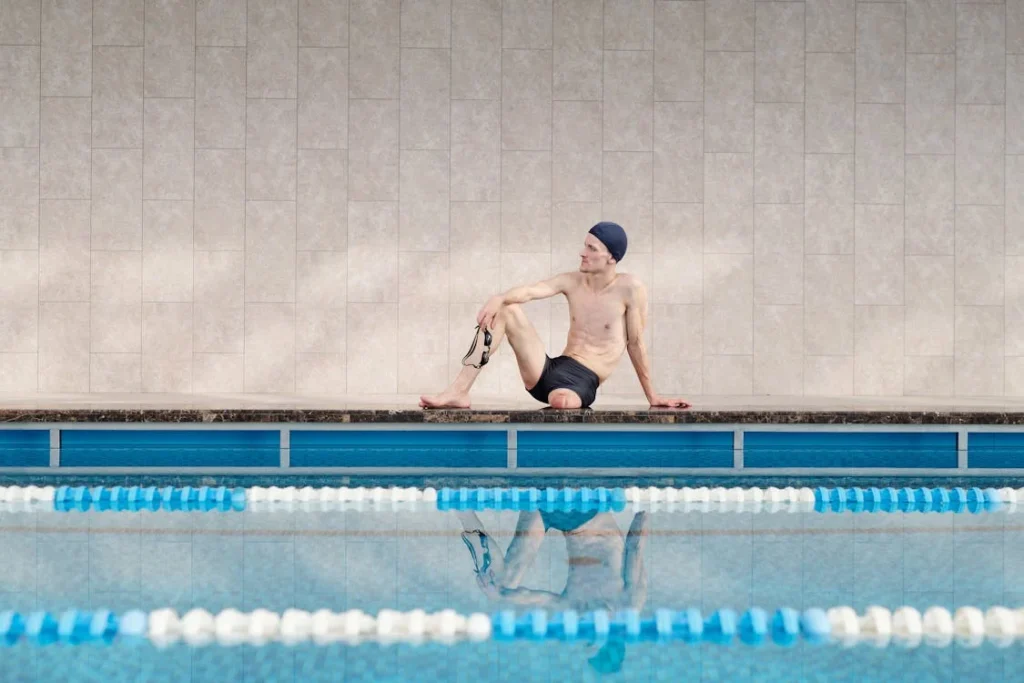
Understanding the Residual Limb After Amputation
What Happens Right After Surgery
After an amputation, your body begins the natural healing process. The area where your limb was removed is now called the residual limb, or sometimes simply the stump. In the early days following surgery, this area will likely be swollen, sensitive, and bruised.
You may feel discomfort, tightness, or phantom sensations, where it feels like your missing limb is still there. All of this is normal and part of your body’s response to the change.
The muscles, skin, blood vessels, and nerves in your residual limb are adjusting. There may be surgical stitches or staples holding the skin closed. The swelling is your body’s way of protecting the area while it heals, but this swelling can also slow down your ability to wear a prosthetic comfortably later on.
That’s where massage and compression come in—they help your limb become smoother, firmer, and better shaped for a prosthetic.
In the first few weeks, your medical team will usually clean the wound, manage pain, and monitor for any infection. This is a crucial time to rest, stay clean, and allow the wound to close fully.
At this stage, you won’t be doing massage or using compression. Instead, your focus will be on keeping the area dry, avoiding too much movement, and listening to your doctor’s advice.
Why the Residual Limb Needs Special Care
As healing begins, your limb will start to change. The shape becomes more defined as swelling goes down. You might notice that it feels uneven or soft in places. The skin may feel tight, or you may feel pressure inside the limb.
This is because the body is still adjusting. At the same time, your brain is learning how to deal with the new signals it receives from this part of the body.
The residual limb needs care because it will eventually carry weight, move, and connect with your prosthetic. To make that possible, the limb must become strong, smooth, and desensitized to touch.
Massage and compression therapy help with all of this by teaching your limb how to accept pressure and by guiding its shape during healing. If you skip this part of the process, it may be harder later on to get a comfortable fit with your prosthetic, and you might face more pain or discomfort.
Some people think they only need to start thinking about limb care once they get their prosthetic. But in truth, the earlier you begin (once your doctor approves), the better your long-term results will be.
Taking the time now to understand what your limb is going through sets you up for a smoother, faster recovery.
Common Feelings in the First Few Weeks
In the beginning, you may feel a mix of physical and emotional changes. Your limb might feel itchy, tingly, or even painful at times. These feelings may come and go. It’s important to know that all of this is expected. You may feel frustrated or unsure about how things are progressing. That’s normal too.
Talking with a professional who understands prosthetics can help a lot. At Robobionics, we always encourage early conversations with our rehabilitation team.
Through our partner clinics like Omnify Prosthetics, we offer both in-person and remote support to help you understand what your limb is going through and what to do next.
The biggest thing to remember is that your residual limb is not a problem—it’s the beginning of something new. With the right care, it will become stronger, more stable, and ready for the next step of your journey.
Our goal is to make that journey as smooth and confident as possible, starting from these early days.
When you feel ready, or when your surgeon gives you the green light, we can begin looking at massage and compression therapy. These aren’t complicated techniques, but they do require a little guidance and consistency.
The good news is that once you know what to do, it becomes just another part of your daily routine.
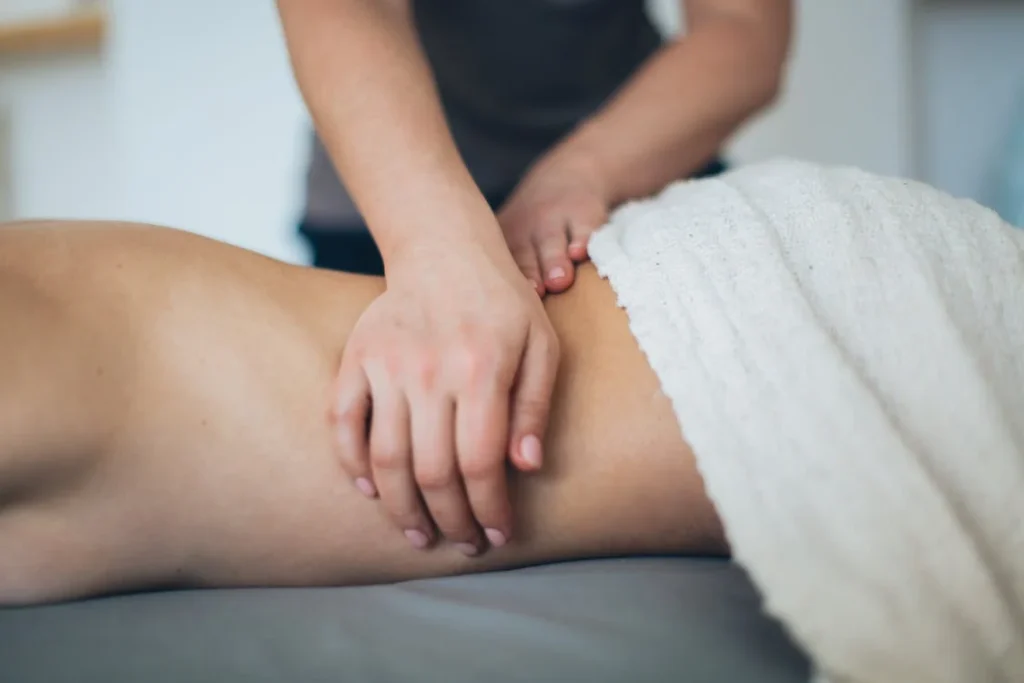
How Residual Limb Massage Helps in Healing
The Purpose of Massage After Amputation
Once your residual limb has healed enough after surgery—and your doctor says it’s safe to begin—massage becomes one of the most powerful tools in your recovery. It’s not just about relaxation.
Massage helps prepare the limb for the physical demands of wearing a prosthetic. It also supports better blood flow, reduces tightness in the skin and muscles, and helps prevent stiffness that could cause discomfort later.
During the healing process, your limb is going through constant changes. The skin may feel numb in some areas, and overly sensitive in others. Gentle massage teaches your skin and nerves how to handle touch again.
Over time, what once felt uncomfortable begins to feel normal. This is important because your prosthetic will apply pressure to many parts of the residual limb, and you want your body to get used to it.
Massage also plays a big role in reducing the feeling of phantom pain. These are the strange or sometimes painful sensations that seem to come from the missing part of the limb.
Massaging the residual limb can confuse these pain signals and help reduce them. It may not happen overnight, but many people find that the more regularly they massage their limb, the less intense these phantom sensations become.
How to Start Massaging Safely
The first thing to know is that massage should never be painful. If you’re ever unsure, check with your doctor or therapist.
Once your wound has fully closed and the stitches or staples have been removed, you can begin. Start slow. Use clean hands and choose a soft surface like your bed or a towel on your lap.
In the beginning, it’s best to keep the pressure light. Use the flat parts of your fingers—not your nails—and gently move them in circles or up and down along the limb.
You’re not trying to dig deep or apply force. Instead, think of it like waking up the skin and muscles. If the area feels tight or sore, go slower. The goal is comfort, not intensity.
As you get more confident, you can increase the pressure just a bit. You may notice that certain areas feel firmer or more swollen. These spots are especially good to focus on.
Over time, massage can help reduce hard spots and support a more even shape. This is especially helpful when it’s time to fit your prosthetic.
You don’t need fancy oils or creams, but using a gentle moisturizer can help your fingers glide and keep your skin healthy. Choose something without perfume or strong chemicals, as your skin may still be sensitive.
One of the most effective ways to stay consistent is to make massage part of your daily routine. Try doing it after your bath or before bedtime. Just five to ten minutes a day can make a real difference. You don’t need to do it perfectly, just regularly.
Emotional Benefits of Massage
What many people don’t expect is how calming and empowering massage can feel. After surgery, it’s easy to feel disconnected from your body, especially the part that’s changed.
Touching your limb, getting used to it, and feeling it respond to your care helps you reconnect. It gives you control. You’re no longer just waiting to heal—you’re helping it happen.
Some people also find that massage reduces anxiety and stress. The calm, repetitive movements help you slow down and focus. It’s a small act of care that reminds you that you’re healing, improving, and moving forward.
At Robobionics, we teach our users how to do limb massage correctly as part of their early rehab. Whether you visit one of our authorized clinics or connect with us remotely, our team will guide you step by step. We also offer video support and printed instructions for those who prefer learning at home.
For anyone preparing to use a prosthetic—especially a responsive one like our Grippy™ bionic hand—limb massage is an essential part of the journey. It’s not just about softening skin or easing pain. It’s about preparing your body and mind to use your new limb with confidence.

The Role of Compression in Shaping the Residual Limb
Why Compression Is So Important
Once the swelling starts to go down after surgery and your wound has healed, your next big step is learning how to shape your residual limb. Compression helps with this in a very powerful way.
It gently squeezes the limb to reduce swelling, guide the shape, and prepare the limb for a prosthetic socket. Without compression, the limb may stay swollen or become uneven, making prosthetic fitting more difficult and uncomfortable.
Compression isn’t something that shows results overnight. It’s a slow and steady process, but when done right, it leads to a well-shaped, firm, and desensitized limb.
This helps your prosthetic sit better and feel more natural. The compression also helps with pain, improves circulation, and even reduces the feeling of heaviness that many people experience in their residual limb during recovery.
Some people feel nervous about compression at first, worried it might be too tight or painful. But when done properly, it should never cause harm.
It’s about applying steady, even pressure to guide healing—not to push too hard or cut off circulation. Starting with the right tools and learning how to use them safely is key.
When to Start Using Compression
Compression doesn’t begin immediately after surgery. Your doctor or rehabilitation expert will usually recommend waiting until the stitches are out and the skin is fully closed.
This is typically a few weeks after surgery, depending on how your body heals. You should never apply compression over an open wound or infected area.
Once you’re cleared to start, you’ll likely begin with a soft compression wrap, a shrinker sock, or a silicone liner. Each method works a bit differently, but they all help the same goal: shaping the limb and reducing swelling.
The type you use will depend on your limb shape, skin condition, and how far along you are in healing.
At Robobionics, we provide guidance on which compression method is best for you. When you book a consultation with our team or visit one of our partner clinics like Omnify Prosthetics, our specialists will look at your limb, understand your progress, and help you get started with the right approach.
How Compression Works Day by Day
Once you begin compression, it becomes a part of your daily routine. You’ll usually wear the compression sock or wrap during the day and take it off at night, unless your care team advises otherwise.
In the beginning, it may feel snug or slightly unusual, but it shouldn’t hurt. As your limb adjusts, the compression becomes more comfortable, and you may even look forward to the feeling of support it provides.
Over time, you’ll start noticing changes. The swelling goes down, the shape becomes more defined, and your skin becomes tougher and more tolerant of pressure.
This makes it much easier when it’s time to fit your prosthetic. A limb that’s been shaped well with compression fits better in a socket, feels more natural, and causes fewer pressure sores or discomforts later.
It’s important to check your limb daily while using compression. Look out for any red spots, marks that don’t go away, or areas that feel too tight.
If something doesn’t feel right, take a break and talk to your prosthetist or rehab specialist. At Robobionics, we offer follow-up care and remote support to make sure your limb care is working for you and not causing any harm.
Emotional Support and Staying Consistent
It’s easy to lose motivation with something like compression, especially in the early stages when results seem slow. But it’s one of the most important things you can do to prepare for your prosthetic.
Many of our users have told us that once they saw the progress—a smoother, firmer, better-shaped limb—it gave them a huge confidence boost.
It also helps to have someone guide you along the way. That’s why we at Robobionics stay connected with you through every step.
From your first compression fitting to your last rehab session, we’re here to support and motivate you. Whether through Omnify Prosthetics or our direct support line, you never have to go through this alone.
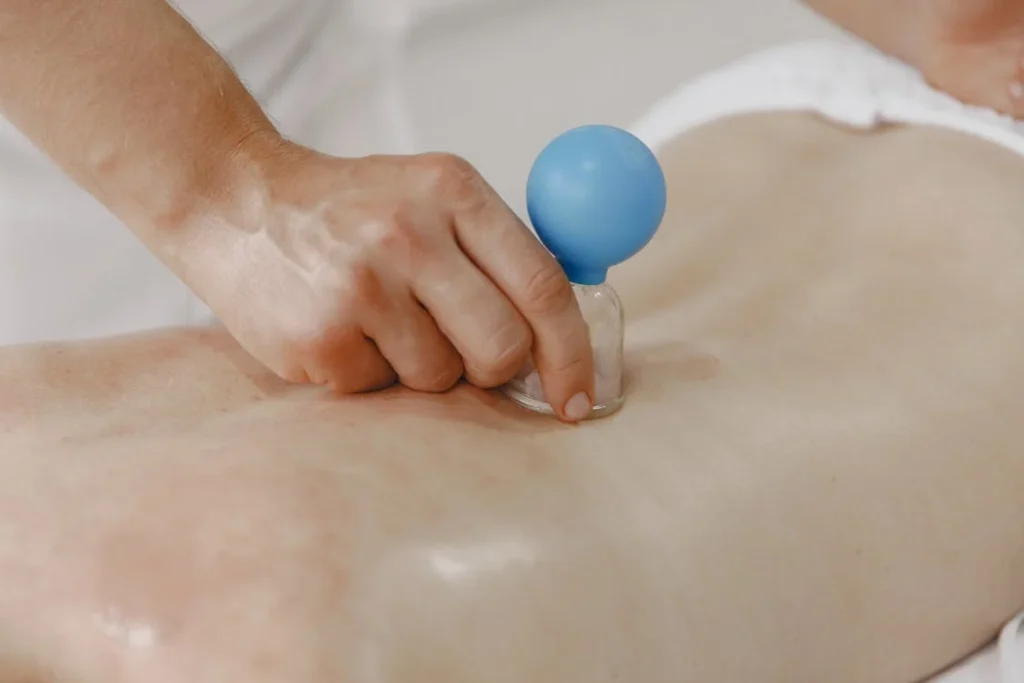
Common Mistakes to Avoid During Limb Massage and Compression
Going Too Fast, Too Soon
One of the most common mistakes people make is trying to rush the healing process. It’s completely understandable—you want to get better, get moving, and wear your prosthetic as soon as possible. But when it comes to limb massage and compression, patience is key.
If you start massaging too soon, especially before the wound has healed, you can reopen stitches or slow down recovery. The same goes for compression. Applying pressure too early or too tightly can lead to skin damage or reduce blood flow, which only delays your progress.
It’s important to wait for the green light from your surgeon or prosthetist before beginning any routine. Once they say you’re ready, then you can take it step by step. Healing doesn’t need to happen overnight. It needs to happen the right way.
Using the Wrong Techniques
Another mistake is using techniques that aren’t right for your stage of recovery. With massage, using your nails instead of the soft part of your fingers can scratch the skin, especially if it’s still sensitive.
Rubbing too hard or pressing down aggressively can cause bruising or even nerve irritation. Massage should feel soothing, never sharp or painful.
With compression, using materials that are too tight or applying them incorrectly can lead to wrinkles in the wrap or sock. These wrinkles put uneven pressure on the limb and can create sore spots or even wounds over time.
The limb should feel supported, not squeezed. If your skin turns blue, goes numb, or hurts after applying compression, it’s too tight.
At Robobionics, we often see users improve quickly once they switch to the correct technique. That’s why we offer training and guidance with every stage of limb care. You don’t need to figure this out alone—we’re here to help.
Skipping Days or Breaking Routine
It can be tempting to skip a massage or leave your compression wrap off for a day, especially if you’re tired or busy. While missing a day occasionally won’t ruin your progress, doing it often slows down your healing.
The limb may swell back up, or areas that were getting softer may feel firm again.
Building a consistent routine is essential. Even just five minutes of massage a day or wearing your compression wrap as advised can make a big difference. Recovery is not just about big steps—it’s about steady, small actions every day.
If you struggle to stay consistent, try tying these habits to something you already do. Massage right after brushing your teeth, or put on your compression sock after your morning tea. Making it a part of your daily rhythm helps you stick with it.
Not Monitoring Changes in the Limb
One mistake many people don’t realize they’re making is ignoring changes in their limb. Your residual limb will keep evolving for weeks or even months.
That means you need to check it often. If you see new redness, swelling, unusual pain, or dry, cracked skin, these could be signs something’s not right.
Sometimes the prosthetic socket may start to feel too loose or too tight because your limb shape is changing. This is normal, but it needs attention. Ignoring these signs can lead to blisters, pressure sores, or even infection.
At Robobionics, we encourage all users to do a quick daily check of their limb. It only takes a few minutes but can save you from much bigger problems down the line.
If something feels off, contact your care provider or reach out to us. Whether through a quick video call or a visit to an Omnify Prosthetics clinic, we’ll guide you on what to do next. Your comfort and safety are always our top priority.
Trying to Go It Alone
Perhaps the biggest mistake is thinking you need to manage everything by yourself. Recovering from limb loss is a big adjustment, physically and emotionally. While independence is the goal, support is the path that gets you there faster and more safely.
There’s no shame in asking questions, getting a second opinion, or reaching out for help. Whether it’s understanding how to do massage correctly or learning how to wear your compression wrap more comfortably, having a team behind you makes a big difference.
At Robobionics, we’re not just here to sell prosthetics. We’re here to walk with you through every stage of the journey.
We also offer personalized rehab programs, including gamified home-based rehabilitation that helps you stay engaged and make progress from home. These tools are designed to keep you motivated and make recovery feel like a part of life, not a chore.
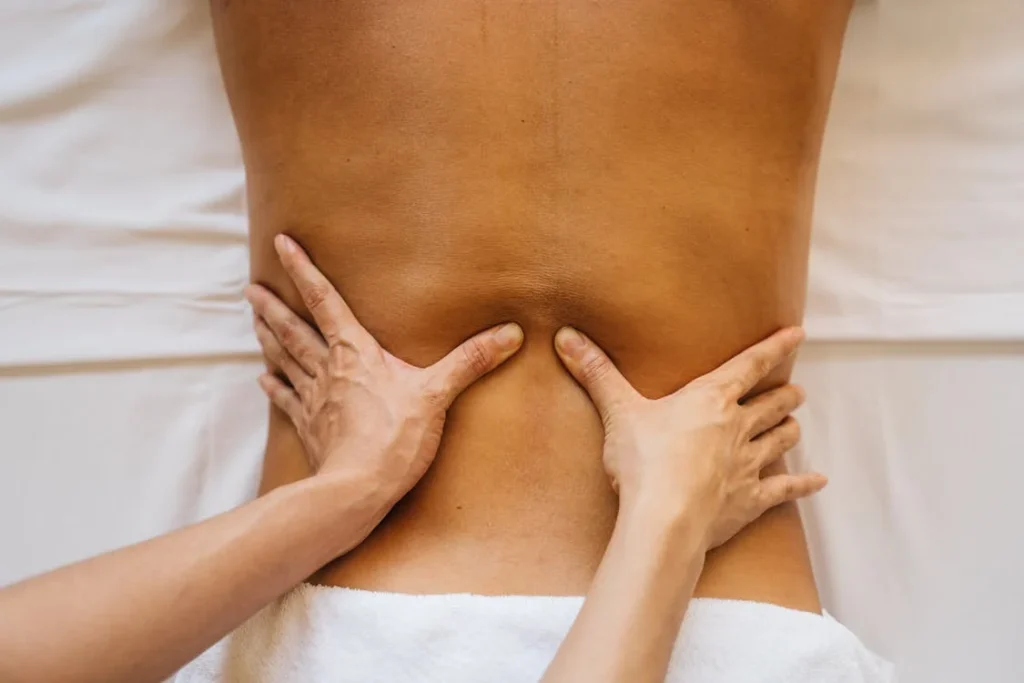
Building a Daily Routine with Massage and Compression
Why a Routine Matters
Healing after limb loss isn’t just about what you do—it’s also about how often you do it. A simple daily routine can create a rhythm in your recovery that helps your body respond faster and more smoothly.
When you do your massage and wear your compression device regularly, your limb starts to adapt. It learns how to handle touch, pressure, and movement, which are all essential for using a prosthetic comfortably.
Many people underestimate how powerful a routine can be. It’s not about doing everything perfectly. It’s about showing up for yourself each day and giving your body what it needs to heal.
That consistency builds momentum. And with time, you’ll notice how your limb changes—not just in shape, but in how it feels and functions.
The best part is, your routine doesn’t have to be long or complicated. Even ten to fifteen minutes a day can make a huge difference if done correctly. It just takes a little planning and a bit of patience.
Creating a Routine That Works for You
The best routine is one that fits into your life without feeling like a burden. Some people like to start their day with massage and compression. It helps wake up the limb and makes them feel ready for movement.
Others prefer to do it in the evening, as a way to wind down and reflect on the day.
What matters most is finding a time that works for you. Once you find that time, try to stick to it. Doing it at the same time each day helps your brain and body treat it like a natural part of your schedule. That makes it easier to remember and harder to skip.
You can start your routine by gently cleaning your residual limb. This keeps the skin healthy and reduces the chance of infection.
After drying the limb, you can begin massage. Start with light circular movements and then move to longer strokes along the limb. This wakes up the nerves, improves blood flow, and helps break down any areas that feel firm or swollen.
After your massage, it’s time for compression. Put on your shrinker sock or wrap the limb carefully, making sure the pressure is even.
Avoid creases or folds, as they can create pressure points. Once it’s on, you can go about your day—resting, walking, or doing rehab exercises as needed.
If you prefer, you can also do massage later in the day after you remove your compression sock. The warmth and softness of the limb after wearing compression can make massage feel more comfortable and effective.
At Robobionics, we understand that every user is different. That’s why we offer custom guidance to help you build a routine that fits you.
Whether you’re recovering at home or coming to one of our clinics, our rehab team will show you how to do each step in a way that feels simple and doable.
Staying Motivated When It Gets Hard
Even with the best intentions, some days are harder than others. You might feel tired, discouraged, or just not in the mood. That’s normal. Healing is not a straight line. There will be ups and downs. What matters is that you keep going, even if progress feels slow.
One way to stay motivated is to track your progress. Keep a small notebook where you write how your limb feels each day.
Write down things like comfort level, pain, or how your prosthetic fits. Over time, you’ll start to notice patterns and improvements. That kind of progress can be very encouraging.
Another way to stay on track is to involve someone you trust. A family member, friend, or rehab partner can remind you, cheer you on, or even do the routine with you. Connection makes healing feel less lonely and more empowering.
We also recommend exploring our gamified rehabilitation programs. These tools make limb care more interactive and enjoyable.
They help you build muscle control and coordination, all from the comfort of home. And they’re designed to keep you engaged, even on the tough days.
When you feel stuck or unsure, just reach out. Our team at Robobionics is always ready to help you re-adjust your routine or guide you through a tricky part of recovery. Your progress is our priority, and we’re here every step of the way.
If you haven’t yet started a daily limb care routine, now is the perfect time. Reach out to Robobionics for your personalized limb care plan and take the next step toward a smoother, stronger recovery.
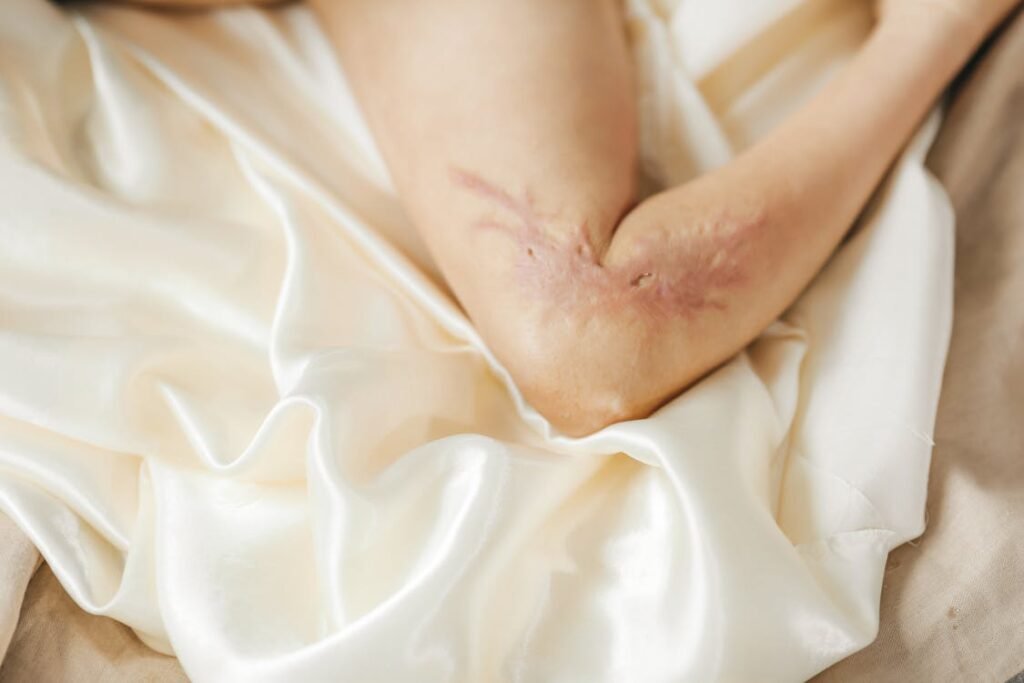
When to Stop or Change Your Massage and Compression Routine
Listening to Your Body
As helpful as massage and compression are in the early stages of recovery, there comes a point when your limb no longer needs the same kind of care.
This doesn’t mean you stop completely—it just means your body is entering a new phase, and your routine needs to follow. The most important part of this transition is listening to your body.
If something starts to feel different—whether it’s more discomfort, new sensitivity, or even increased tightness—it might be time to change your approach.
It’s also common to feel unsure whether you’re doing too much or too little. A good rule of thumb is this: if your limb feels sore in a way that doesn’t go away after rest, or if redness and marks appear and stay for hours, your technique might be off or it may be time to ease up.
Massage and compression should never leave you in pain. They should leave your limb feeling calm, supported, and ready to move.
As your limb heals, it may become stronger and more tolerant. You might notice that massage no longer feels as necessary or that compression socks start to feel loose. These are signs of progress. Your body is telling you that it’s adapting—and now it needs something new.
Adjusting Your Routine for a Fitted Prosthetic
Once you’ve been fitted with a prosthetic, especially a well-designed one like Grippy™ from Robobionics, your focus shifts. Now, your priority is socket comfort, skin health, and muscle control.
While massage and compression may still be useful in small ways—such as soothing sore spots after a long day of walking—they are no longer the main tools for shaping your limb.
At this stage, many users reduce their massage sessions to once or twice a week. They may stop wearing compression wraps altogether unless there’s swelling or socket issues.
If your prosthetic fit is good and your skin is staying healthy, you may not need much more beyond daily hygiene and occasional care.
But if your limb changes shape suddenly, or if your prosthetic starts to feel loose or painful, you may need to bring compression back for a short time.
This is why regular follow-ups with your prosthetist are important. At Omnify Prosthetics and other Robobionics-authorized clinics, we schedule routine check-ins to ensure your prosthetic is fitting well and your limb care is still working for you.
We also help you learn how to manage changes, like what to do if your limb shrinks or if your socket starts to feel different. You don’t need to guess. Our team is always ready to guide you through these moments, whether in-person or online.
Signs It’s Time to Re-Evaluate
There are a few clear signs that you should stop your routine or adjust it significantly. If your skin becomes irritated, broken, or infected, pause immediately and contact your medical provider.
If you begin experiencing strong phantom pain during or after massage, it might mean you’re using too much pressure. In some cases, your limb may become too dry or flaky if massage is done too often with the wrong creams.
Likewise, if your compression sock starts to slip, bunch, or cut into your skin, stop using it until you get advice. Ill-fitting compression tools can do more harm than good.
Always check your devices for wear and tear. If they’ve become too stretched or damaged, it’s time to replace them.
When you notice these changes, don’t wait. Reach out to a specialist. At Robobionics, we take pride in offering timely and local support to our users.
Whether you need a new shrinker sock, advice on switching your routine, or help with phantom pain, our care team is just a call or message away.
Embracing the New Phase of Recovery
Stopping or changing your routine is not a setback—it’s a sign that your healing is moving forward. You’re transitioning from healing to living with your prosthetic. This is something to feel proud of.
You might still massage your limb now and then. You might keep your compression sock nearby just in case. But your focus will now be on mobility, strength, and independence.
You’ll spend more time walking, working, and enjoying life again—and that’s exactly what we want for you.
Conclusion
Caring for your residual limb through massage and compression is one of the most important steps in your recovery. It helps shape your limb, ease pain, and prepare you both physically and mentally for life with a prosthetic. But more than that, it gives you control—reminding you every day that healing is something you can actively shape.
At Robobionics, we’re proud to walk this journey with you. From your first consultation to your final fitment and beyond, we’re here with expert guidance, personalized care, and innovative solutions like our Grippy™ bionic hand. Whether you visit one of our clinics through Omnify Prosthetics or connect with us online, you’ll never have to face recovery alone.
Start your journey today. Book a free demo of Grippy™, explore our home-based rehab programs, or simply reach out with a question. You’ve got this—and we’ve got your back.
Contact Robobionics now and take the first step toward a more confident, independent future.
https://robobionics.store | https://omnifyprosthetics.com



